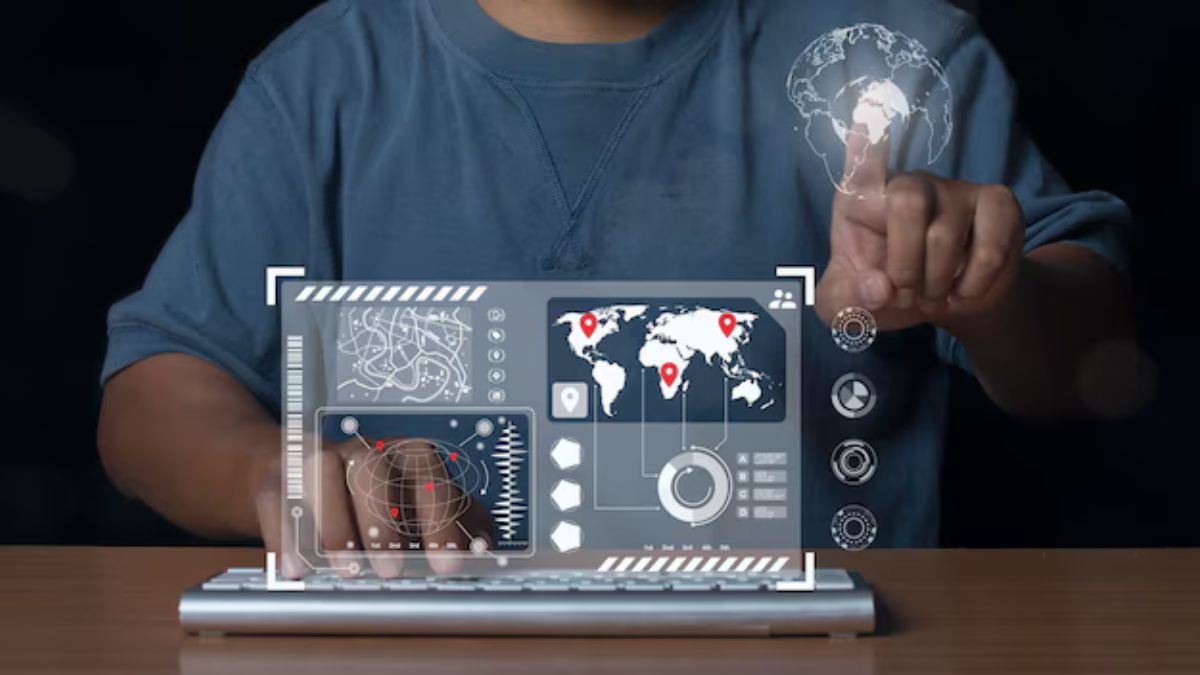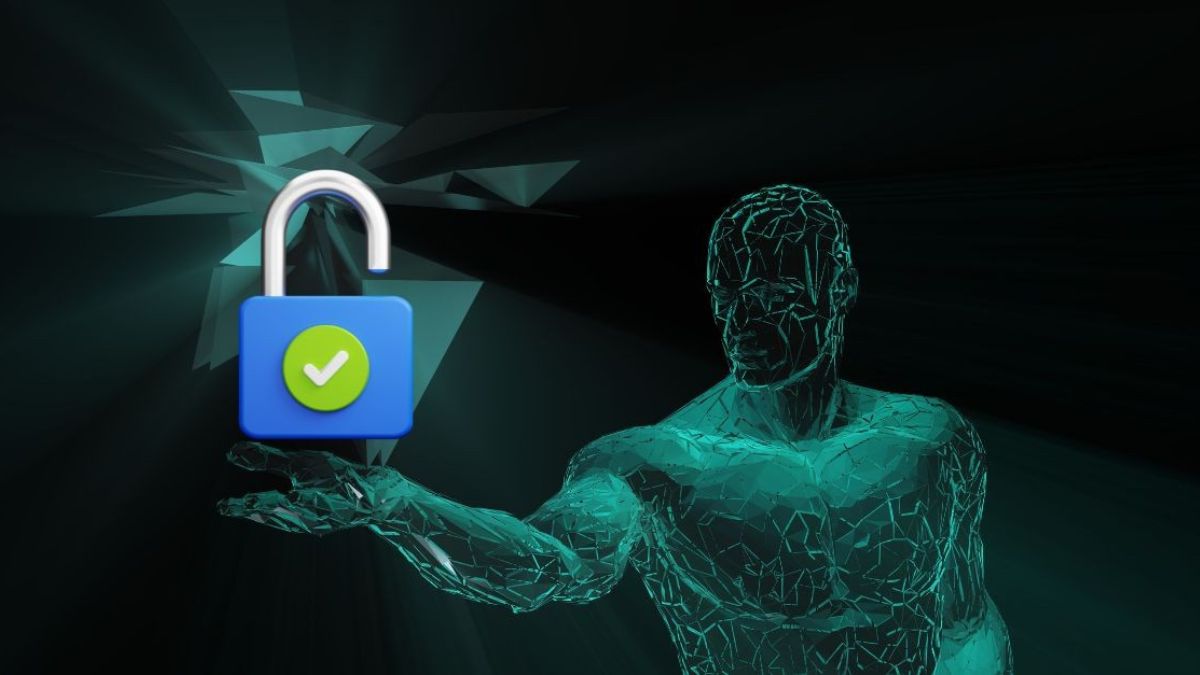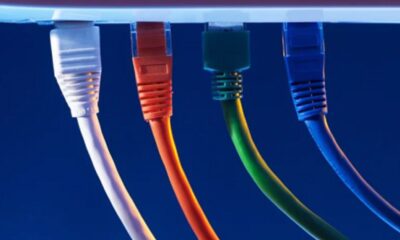TECHNOLOGY
A Step-by-Step Guide to Transforming MXD to SLD

Are you working with geographic data and feeling the pressure to convert your MXD files into SLD? You’re not alone! The journey from Map Document (MXD) to Styled Layer Descriptor (SLD) can seem daunting, but it opens up a world of possibilities for sharing and visualizing your maps effectively. Whether you’re looking to enhance interoperability among different GIS platforms or simply want more control over your map styling, understanding this conversion process is crucial.
In this guide, we’ll walk you through each step of transforming MXD files to SLD. Get ready to dive in and unlock the potential of standardized styling while ensuring your geographic information reaches its full audience!
Why convert MXD to SLD?
Converting MXD to SLD opens doors to enhanced compatibility across various mapping platforms. MXD files, tied to ArcGIS Desktop, can be limiting when sharing or collaborating with other GIS applications.
By transforming your MXD files into SLD format, you ensure that styles and symbology are preserved. This is crucial for maintaining visual consistency in your maps when shared with teams using different software environments.
SLD is widely accepted and supported by many web mapping services. This means your cartographic designs can reach broader audiences without losing their intended impact.
Additionally, converting to SLD simplifies the process of integrating data from multiple sources. It enhances workflow efficiency by allowing users to leverage a standardized style definition across diverse GIS tools.
The shift from MXD to SLD not only broadens access but also enriches collaborative efforts within the geospatial community.
Step 1: Preparing your data for conversion
Before diving into the conversion process, it’s crucial to prepare your data carefully. Take a moment to organize all elements within your MXD file. This includes ensuring that layers, symbology, and labels are clearly defined.
Check for any missing data sources or broken links. These can cause issues during conversion and lead to errors in the final SLD file. A clean slate makes everything smoother.
Next, streamline your layer structure by removing unnecessary layers or grouping similar ones together. This not only simplifies the conversion but also enhances readability in your final product.
Consider documenting specific settings or customizations you want to replicate in the SLD format. Having this information handy will save time later on and help maintain consistency across projects. Preparing thoroughly sets a strong foundation for a successful transition from MXD to SLD.
Step 2: Choosing a conversion tool
Selecting the right conversion tool is crucial for a smooth MXD to SLD transformation. Various software options exist, each with its unique features and capabilities.
Consider tools that are specifically designed for converting ESRI ArcGIS files into SLD format. Research their compatibility with your existing data. Look at user reviews and ratings to gauge effectiveness and ease of use.
Some tools offer free trials or demo versions. Utilize these opportunities to test functionality before committing financially. This also allows you to familiarize yourself with the interface.
Integration with other GIS applications can be an added bonus, helping streamline your workflow post-conversion. Ensure that customer support is accessible in case issues arise during the process; reliable assistance can save time and frustration when challenges occur.
Step 3: Converting MXD to SLD
Once you’ve selected your conversion tool, it’s time to dive into the actual process of converting MXD to SLD. Start by opening your chosen software and loading the MXD file. This step is crucial; ensure your map document is complete and contains all necessary data layers.
Next, look for an option labeled “Export” or “Convert.” Each tool has its own interface, so familiarize yourself with it beforehand. Follow the prompts carefully as they guide you through selecting output settings tailored for SLD format.
After configuring these options, initiate the conversion. Depending on file size and complexity, this may take a moment. Once completed, don’t rush off—stay patient and check if any warnings or errors appear in the log window following conversion.
Save your new SLD file in a designated folder where you can easily access it later.
Step 4: Testing and troubleshooting
After converting your MXD to SLD, it’s crucial to test the new file. Open the SLD in your GIS software and check if all layers are displaying correctly. Look for any missing symbology or data that didn’t transfer.
If you encounter issues, don’t panic. Begin troubleshooting by verifying that all source files linked in the MXD were accessible during conversion. Missing data can lead to incomplete representations.
Next, examine attribute values within the SLD. Sometimes they might not match what was expected from the original MXD settings.
Make adjustments as necessary. If certain styles didn’t carry over, try reapplying them manually within your GIS application.
Don’t hesitate to seek help from online forums or communities dedicated to GIS technologies if you’re stuck. Often, other users have faced similar challenges and can offer practical solutions.
Tips for a successful conversion
To ensure a smooth transition from MXD to SLD, start by backing up your original files. This precaution saves you time and effort in case something goes awry during the conversion process.
Next, pay attention to data compatibility. Review the layers and elements in your MXD file. Make sure they are supported by the SLD format to avoid issues later on.
Consider using a reliable conversion tool that suits your needs. Read user reviews or seek recommendations for tools known for their efficiency and reliability.
After converting, always validate your new SLD file. Check if all elements appear as expected and function correctly within the intended software environment.
Don’t rush through testing. Take time to troubleshoot any discrepancies that may arise post-conversion. A methodical approach will yield better results in the long run.
Conclusion
Transforming your MXD files to SLD may seem daunting at first, but by following these steps, you can streamline the process and enhance your mapping capabilities. Understanding both file types is crucial for effective data management in GIS. The reasons for conversion are compelling, whether it’s for compatibility purposes or improving project efficiency.
Preparing your data carefully sets a strong foundation. Choosing the right tools makes all the difference in ensuring a smooth transition from MXD to SLD. Once you’ve completed the conversion, thorough testing ensures that everything functions as expected.
Implementing tips like backing up original files and documenting each step can safeguard against potential issues down the line. As you navigate this transformation, remember that patience and attention to detail yield great results.
With practice and persistence, you’ll become adept at converting MXD to SLD efficiently while enhancing your understanding of GIS technologies along the way. Happy mapping!
TECHNOLOGY
User Experience Review: Navigating the Interface of StateKaidz.com

Navigating government websites can often feel like a chore. But what if it didn’t have to be that way? Enter StateKaidz.com, a platform designed to simplify your experience with state services. With its fresh approach and user-centric design, this website aims to make accessing information easier for everyone. Whether you’re looking for resources on public services or trying to understand complex regulations, StateKaidz.com may just be the breath of fresh air you’ve been waiting for. Let’s dive into how this site stacks up in terms of interface and navigation!
Website Interface and Navigation
StateKaidz.com boasts a clean and straightforward website interface that prioritizes user engagement. The layout is intuitive, allowing visitors to find information quickly without endless scrolling or searching.
Navigation is simplified with clear categories prominently displayed on the homepage. Users can easily identify sections related to state services, resources, and updates.
The search function works efficiently, delivering relevant results almost instantly. This feature minimizes frustration for users seeking specific information.
Responsive design ensures that the site operates seamlessly across devices. Whether accessed via smartphone or desktop, navigation remains fluid and accessible.
These elements create a welcoming environment where users feel empowered to explore their state’s offerings without unnecessary hurdles.
User-Friendly Features
StateKaidz.com excels in offering user-friendly features that enhance the overall experience. The homepage greets visitors with a clean layout, making it easy to locate essential services.
Search functionality stands out. Users can quickly find information by typing keywords into the search bar. This eliminates any guesswork when navigating through various sections.
The site also incorporates clear call-to-action buttons. These guide users toward important tasks, whether that’s applying for benefits or accessing support resources.
Responsive design is another highlight. Whether accessed via desktop or mobile, StateKaidz.com maintains its usability across devices. Text remains readable and images crisp, which keeps users engaged no matter how they browse.
Additionally, helpful FAQs are strategically placed throughout the site. This resource empowers users to troubleshoot common issues independently without needing extra assistance from support staff.
Potential Improvements
While StateKaidz.com offers a solid foundation, there are areas that could enhance the user experience further. For instance, the search functionality can feel limited at times. A more robust filtering system would help users locate specific information quickly.
Another aspect worth considering is mobile optimization. Although the site is accessible on smartphones, certain elements may not display as well as they do on larger screens. Streamlining these features for mobile use could significantly improve accessibility.
Additionally, incorporating visual aids like infographics or videos might engage users better and clarify complex topics. This approach makes information easier to digest and memorable.
Gathering user feedback through surveys or forums could provide valuable insights into what visitors truly need from StateKaidz.com. Actively seeking this input ensures continuous improvement driven by actual user experiences and preferences.
Benefits of a User-Centered Design
User-centered design focuses on the needs and preferences of users. This approach creates an intuitive experience that enhances satisfaction.
When users find what they need easily, it builds trust in the website. They are more likely to return if their navigation is seamless.
Moreover, a user-centric layout minimizes frustration. Fewer obstacles lead to quicker task completion, boosting overall efficiency.
Feedback plays a crucial role here. By involving actual users in the design process, developers can pinpoint pain points early on.
A responsive design also adapts well across devices. Whether accessed via smartphone or desktop, consistency ensures comfort for all visitors.
Investing in user-centered design ultimately fosters loyalty and engagement. Happy users often become advocates for the platform, spreading positive word-of-mouth throughout their networks.
Comparison to Other Government Websites
When examining statekaidz.com against other government websites, it stands out in several ways. Many government portals can feel daunting and cluttered, overwhelming users with a plethora of information.
StateKaidz takes a different approach. The interface is clean and intuitive, prioritizing user needs right from the homepage. Visitors can easily locate essential services without wading through excessive links or jargon.
Additionally, while some government sites rely on outdated design principles that hinder usability, StateKaidz embraces modern design trends. This creates an inviting atmosphere for users seeking assistance or information.
Furthermore, accessibility features are often overlooked on many governmental platforms. StateKaidz makes strides in ensuring everyone can navigate effectively—something that sets it apart significantly.
This commitment to user experience highlights how statekaidz.com aims not just to inform but also empower its visitors with seamless navigation and efficient service access.
Conclusion
When it comes to navigating statekaidz.com, users are met with a thoughtfully designed interface that aims to streamline their experience. The website prioritizes ease of access and clarity, making essential services readily available for all visitors. This focus on user experience is crucial, especially in the realm of government websites where efficiency can significantly impact public satisfaction.
The various features integrated into statekaidz.com enhance its usability. From intuitive search functions to organized content categories, every aspect seems tailored toward ensuring that users find what they need without hassle. These elements not only make navigation smoother but also foster a sense of trust between the site and its users.
There are always areas for enhancement within any platform. For those who frequent statekaidz.com, feedback mechanisms or more interactive components could elevate engagement further. Regular updates based on user input would ensure the site evolves alongside community needs.
A commitment to user-centered design holds several advantages beyond mere aesthetics; it cultivates accessibility and inclusivity while empowering citizens to engage effectively with governmental resources. When people feel supported by an easily navigable interface, they’re more likely to utilize these vital services.
Comparing statekaidz.com with other government websites reveals some key differentiators in terms of layout and functionality. Many sites still struggle with outdated designs or confusing interfaces that deter users from accessing important information as quickly as possible.
In sum, statekaidz.com stands out as an exemplary model in public service web design—one that champions both form and function while continuously striving for improvement through user feedback and innovative features.
TECHNOLOGY
How to Maximize Your Experience on callscroll.com#: Tips and Tricks

Welcome to the world of callscroll.com#, where finding great deals becomes an exciting adventure! If you’re tired of sifting through endless options and want a streamlined way to discover products and services that suit your needs, you’re in for a treat. Callscroll.com# offers a platform designed not only for savvy shoppers but also for those who value efficiency and savings.
Imagine having access to exclusive discounts at your fingertips while connecting with others who share similar interests. Whether you’re on the hunt for tech gadgets, household essentials, or unique experiences, this site has it all—and then some! Ready to elevate your online shopping experience? Let’s dive into how you can make the most out of callscroll.com#!
Benefits of using callscroll.com#
Callscroll.com# is a game-changer for anyone looking to maximize their online shopping experience. It offers an extensive range of products and services, catering to various needs.
One standout benefit is the platform’s user-friendly interface. Navigating through categories is seamless, making it easy to find exactly what you’re looking for without any hassle.
Moreover, callscroll.com# provides exclusive deals that can save you money. Users frequently report finding discounts that aren’t available on other sites.
The community aspect also shines bright here. Interacting with fellow shoppers can lead to discovering hidden gems or tips about the best purchasing strategies.
Additionally, callscroll.com# prioritizes security and privacy, ensuring your personal information remains protected while you shop. This peace of mind allows users to focus solely on enjoying their shopping journey without unnecessary worries.
How to create an account on callscroll.com#
Creating an account on callscroll.com# is a straightforward process. Start by visiting the homepage and look for the “Sign Up” option, usually prominently displayed.
Once you click it, you’ll need to provide some personal information. This typically includes your name, email address, and a secure password. Make sure to choose a strong password for added security.
After filling in your details, check your inbox for a verification email from callscroll.com#. Click on the link provided in that email to confirm your account.
You may also be prompted to customize your profile by adding preferences or interests relevant to what you plan to explore. This step enhances personalized recommendations tailored just for you.
Take a moment to review any terms of service before finalizing your registration. Then you’re ready to dive into all that callscroll.com# offers!
Tips for finding the best deals on callscroll.com#
To find the best deals on callscroll.com#, start by browsing regularly. New offers pop up often, so frequent checks can lead to great finds.
Utilize filters to narrow down your search. This feature allows you to specify categories and price ranges, making it easier to spot what you want at a budget-friendly price.
Don’t forget about seasonal sales or promotional events. Many sellers offer significant discounts during holidays or special occasions.
Engage with the community for insider tips. Users often share their experiences and discoveries that could lead you to exclusive deals.
Keep an eye out for bundle offers too. Sometimes purchasing multiple items together can save more than buying them separately.
Always compare prices across different listings before making a purchase decision. This simple step ensures you’re truly getting the best deal available on callscroll.com#.
Utilizing the search feature effectively
The search feature on callscroll.com# is a powerful tool. It can save you time and help you find exactly what you’re looking for.
Start by using specific keywords related to the product or service. The more precise your search terms, the better your results will be.
Don’t ignore filters! They allow you to narrow down options based on categories, price ranges, or locations. This helps in quickly sifting through irrelevant listings.
Be sure to check related suggestions that pop up as you type. These can lead you to hidden gems that might not have been on your radar initially.
Try experimenting with synonyms or varying phrases if initial searches don’t yield desired results. A little creativity goes a long way when hunting for deals online.
Setting up alerts for desired products or services
Setting up alerts on callscroll.com# is a game changer. It allows you to stay ahead of the curve when it comes to finding the products or services you want.
Begin by logging into your account and navigating to the alerts section. Here, you can specify what items you’re interested in. Whether it’s electronics, clothing, or travel deals, being specific ensures that you’ll only get notifications about what truly matters to you.
You’ll receive instant updates via email or app notifications whenever there’s a match for your criteria. This means no more endless scrolling through listings—just focused insights delivered straight to you.
Don’t forget to adjust your settings periodically! As trends change, keeping your alert preferences fresh will help ensure you’re always aware of new opportunities that align with your interests.
Taking advantage of referral programs and rewards
Referral programs can be a hidden gem on callscroll.com#. They are designed to reward users for bringing new members into the fold. By sharing your unique referral link, you have the chance to earn discounts or credits.
Start by inviting friends and family who might benefit from what callscroll.com# offers. Each time someone signs up through your link, both of you typically reap the rewards.
Don’t overlook promotional campaigns that may boost your earnings further. These opportunities often come with limited-time offers that enhance referral bonuses.
Make sure to stay updated on any changes in the program. Referral terms can shift, so check back frequently for additional ways to maximize benefits while engaging with the platform and its community.
Common mistakes to avoid while using callscroll.com#
When exploring callscroll.com#, users can easily overlook a few key points that might hinder their experience. One common mistake is not reading the fine print on deals or services. Terms and conditions often hold crucial information about restrictions.
Another pitfall is neglecting to update personal preferences in your account settings. Keeping these up-to-date ensures you receive relevant notifications tailored just for you.
Some users also forget to compare prices from different listings on the platform. This simple step could lead to significant savings.
Ignoring customer reviews is another misstep. Reviews provide valuable insights and help gauge whether a deal is genuinely worthwhile or too good to be true. Taking time to read through them can save both money and frustration down the line.
Customer reviews and ratings
Customer reviews and ratings are essential when navigating callscroll.com#. They provide valuable insights into the experiences of others who have used the platform. By reading these reviews, you can gauge the reliability of products or services before making a purchase.
Positive feedback often highlights great deals and customer service. On the other hand, negative reviews can serve as red flags.
Pay attention to recurring themes in both positive and negative comments. This will help you make informed choices about what to buy or which sellers to trust.
Don’t forget that your own experience matters too! Contributing your thoughts adds to the community’s wisdom, helping others find their best options on callscroll.com#.
Conclusion
Maximizing your experience on callscroll.com# can significantly enhance your online shopping journey. By leveraging the platform’s features and following these tips, you can uncover incredible deals and save money.
Creating an account sets the foundation for personalized experiences. Remember to use the search feature wisely; it’s your best friend in navigating a sea of options. Setting up alerts ensures you never miss out on products or services at prices that suit your budget.
Don’t forget about referral programs—they’re a great way to earn rewards while sharing with friends. Beware of common pitfalls like ignoring reviews and ratings; they provide valuable insights into product quality.
By implementing these strategies, you’ll not only enjoy your time on callscroll.com# but also gain access to fantastic savings that make every visit worthwhile. Happy shopping!
TECHNOLOGY
Unlocking the Mystery of Ndrynk: A Comprehensive Guide

If you’ve ever wandered through markets, cafes, or cultural festivals and stumbled across a vibrant beverage known as ndrynk, you might have found yourself intrigued. This tantalizing drink is more than just a refreshment; it’s a journey into tradition, flavor, and community. The allure of ndrynk lies not only in its unique taste but also in the rich history and cultural significance it carries. As we delve deeper into this fascinating beverage, you’ll discover what makes ndrynk stand out from the crowd and why it deserves a place in your life. Join us as we unlock the mystery behind this captivating drink!
The Origins and History of Ndrynk
Ndrynk has roots that trace back centuries, originating in ancient cultures known for their rich traditions and unique beverages. This drink emerged as a symbol of hospitality, often enjoyed during gatherings and celebrations.
Historically, each region added its own twist to Ndrynk. Different ingredients reflect local flavors and customs. As trade routes expanded, so did the variations of this beloved beverage.
Over time, Ndrynk evolved from a simple refreshment to an art form. Artisans began experimenting with spices and fruits, creating distinctive recipes passed down through generations.
In many communities, the preparation of Ndrynk is a ritual steeped in history. It serves not only as nourishment but also as a means of connecting people across cultures. Each sip tells a story—a blend of tradition and innovation that continues to thrive today.
The Cultural Significance of Ndrynk
Ndrynk is more than just a beverage; it’s a symbol of community and connection. Across various cultures, it serves as a centerpiece for gatherings, from festive celebrations to intimate family meals.
The rituals surrounding Ndrynk often reflect local traditions. In some regions, sharing a glass signifies hospitality and friendship. It invites stories to unfold and laughter to echo in shared spaces.
Moreover, Ndrynk carries historical weight. Each sip links drinkers with generations past who crafted unique recipes passed down through families. The flavors are reminiscent of ancestral roots.
Celebrating special occasions with Ndrynk fosters unity among people. Whether it’s weddings or holidays, this drink enhances the spirit of togetherness that transcends age and background.
Through its cultural expressions, Ndrynk embodies the essence of life—celebration, nostalgia, and connection woven into every drop.
How to Make and Serve Ndrynk
Creating Ndrynk is a delightful process, perfect for both casual and formal gatherings. Start with quality ingredients. Fresh fruits, herbs, or spices play a vital role in achieving the right flavor profile.
Begin by selecting your base liquid. Traditional options include water or herbal infusions. For something unique, try sparkling water for an effervescent twist.
Next, muddle your chosen fruits and herbs together in a glass to release their natural oils and juices. Add ice before pouring in the base liquid for that refreshing chill.
To enhance the experience, serve Ndrynk in elegant glasses garnished with additional fruit slices or herb sprigs. This adds visual appeal while emphasizing freshness.
Pair it with light snacks like cheese platters or vegetable skewers to complement the flavors of Ndrynk beautifully. It’s all about creativity; feel free to experiment until you find your perfect blend!
Health Benefits of Ndrynk
Ndrynk offers a range of health benefits that make it more than just an enjoyable beverage. This refreshing drink is often packed with essential nutrients, depending on its ingredients. Many versions incorporate fruit, herbs, or spices, each adding unique health properties.
For instance, if made with citrus fruits like oranges or lemons, Ndrynk becomes rich in vitamin C. This boosts the immune system and promotes healthy skin. Herbs such as mint can aid digestion and provide cooling effects on hot days.
Moreover, Ndrynk can be hydrating without excess sugar found in sodas. Staying hydrated is crucial for overall wellness and energy levels. Some variations even include antioxidants from berries or green tea components.
Not to mention that enjoying Ndrynk can foster social connections when shared among friends and family. These moments of togetherness contribute positively to mental well-being too.
Common Misconceptions About Ndrynk
Many people have misconceptions about ndrynk that can cloud their appreciation for this unique beverage. One common myth is that it’s only an alcoholic drink. While some variations do contain alcohol, there are plenty of non-alcoholic options available.
Another misunderstanding involves its preparation. Some believe making ndrynk requires complex processes and rare ingredients. In reality, it often includes simple components like fruits, herbs, and spices that many have on hand.
Additionally, there’s a notion that ndrynk is just a trend. However, its rich history stretches back centuries in various cultures around the world.
Some think it’s solely a summer refreshment. Ndrynk can be enjoyed year-round with seasonal adaptations to suit different tastes and occasions. Each misconception keeps people from experiencing the full depth of what ndrynk has to offer.
Where to Find and Try Ndrynk
Finding Ndrynk is an adventure in itself. Many specialty cafes and local markets are starting to embrace this unique drink.
Look for artisanal shops that focus on traditional beverages. They often have a selection of Ndrynk, crafted with care and authenticity.
Food festivals can be another great place to explore Ndrynk. Vendors frequently showcase regional drinks, allowing you to sample various flavors and styles.
If you’re lucky enough to visit regions where Ndrynk has deep roots, don’t hesitate to try local eateries or family-owned restaurants.
Online platforms also offer options for purchasing bottled versions of this beverage. Check out websites dedicated to international cuisine or niche food products.
Social media groups about culinary exploration might lead you to hidden gems too! Engaging with other enthusiasts can provide insights on where the best Ndrynk is served near you.
Incorporating Ndrynk into Everyday Life
Incorporating ndrynk into your daily routine can elevate both flavor and wellness. Start by swapping out sugary drinks for a refreshing glass of nd rynk during meals. Its unique taste complements various cuisines.
You might also explore using nd rynk as a base for smoothies or cocktails. Blend it with fresh fruits for a nutritious twist, perfect for brunch gatherings.
Try adding different herbs and spices to customize your drink. A hint of mint or ginger can transform the experience entirely, making it an exciting addition to any time of day.
For those on-the-go, consider preparing pre-made bottles of ndrynk in advance. This way, you always have something healthy at hand when cravings hit.
Share the joy! Introduce friends and family to this delightful beverage at social events or casual get-togethers. It’s not just about drinking; it’s about creating experiences together around every sip.
The Future of Ndrynk
The future of ndrynk is bright and full of potential. As more people become aware of its unique flavors and health benefits, the demand is rapidly increasing.
Innovative recipes are emerging, blending traditional elements with modern twists. This creativity could lead to variations that cater to diverse palates globally.
Sustainability will likely play a key role too. Producers may focus on eco-friendly practices, ensuring that the ingredients used in nd rynk are sourced responsibly.
Moreover, technology might enhance how we enjoy this beverage. Imagine smart devices offering personalized serving suggestions or pairing ideas based on your taste preferences.
As cultures intertwine through travel and social media, different interpretations of ndrynk will surface. This cultural exchange can enrich our understanding and appreciation for this fascinating drink.
Conclusion
Ndrynk is more than just a beverage; it’s an experience. This unique drink has captivated taste buds and intrigued minds across cultures. As we dive into its essence, you’ll discover why it deserves a spot in your life.
To truly appreciate nd rynk, one must understand its roots. Emerging from ancient traditions, this drink has evolved through generations. It was once reserved for special occasions but is now enjoyed by many around the globe.
Ndrynk carries rich cultural connotations. In various regions, it symbolizes unity and celebration. Sharing a glass can foster connections among friends and family while honoring heritage.
Crafting your own ndyrk is simple yet rewarding. Start with quality ingredients that resonate with you personally—fruits, herbs or spices work wonders. Once prepared, serve it chilled for maximum refreshment!
Beyond flavor, ndrybk boasts several health benefits! Packed with vitamins and antioxidants, it can contribute positively to digestion and overall wellness when consumed mindfully.
Despite its popularity, there are misconceptions surrounding ndyrk’s preparation and use. Some believe it’s only suitable for certain occasions or requires complex techniques—but that’s far from the truth!
Curious about where to sample this delightful drink? Many local cafes or specialty shops offer ready-made versions alongside recipes if you’re eager to try making your own at home.
Integrating ndyrk into your daily routine can be refreshing! Whether paired with meals or served at gatherings—it effortlessly enhances any occasion while adding flair.
As tastes evolve globally, so does our relationship with ndrybk! New flavors emerge; innovative recipes keep surfacing—the
-

 TOPIC3 months ago
TOPIC3 months agoChecwifeswap Uncovered: What You Need to Know Before Joining
-

 TOPIC3 months ago
TOPIC3 months agoExploring GifHQ: The Ultimate Hub for GIF Enthusiasts
-

 TOPIC4 months ago
TOPIC4 months agoThe Micro Draco: A Compact Powerhouse in Personal Defense
-

 TECHNOLOGY3 months ago
TECHNOLOGY3 months agoHow Wepbound is Revolutionizing Digital Communication
-

 TECHNOLOGY3 months ago
TECHNOLOGY3 months agoExploring the Future of Technology: A Deep Dive into Betechit
-

 BIOGRAPHY4 months ago
BIOGRAPHY4 months agoMalia Manocherian: Pioneering Paths in Art and Community Engagement
-

 TECHNOLOGY4 months ago
TECHNOLOGY4 months agoUnderstanding Cable Layer: The Backbone of Modern Connectivity
-

 TOPIC4 months ago
TOPIC4 months agoThe Evolution of Lingionner: From Concept to Community
